Astrosoft to monitor the space from the phone

Using the new smartphone ASUS ZenFone 3 Zoom (or any other ZenFone-smartphone), you can not only make high-quality pictures, but also make your dream come true. Unless, of course, you dream of more time to devote to the study of the night sky and space.
Astrosoft for smartphones is a wide range of programs for observing the night (and not only) sky, from a simple map reference book and observation planner to a pocket planetarium. There are dozens of astronomy apps on the App Store or Google Play. Focusing on user ratings, we chose the best software for monitoring space objects.
')
The review is devoted to Android applications, but you can easily find analogues (in many cases of the same name) for iOS.
Free apps
NASA (and others)

The official application of the National Aeronautics and Space Administration USA. A large database of constantly updated images and videos from space, various news, reports on rocket launches, detailed information about current NASA projects, as well as real-time HD broadcast from the ISS. Any of the pictures in the program can be sent to a friend, saved or set as a screensaver. There is an online radio with round-the-clock broadcasting and space programs. If you are interested in space news, put the application arXiv mobile - an online archive in which astronomers (as well as physicists and mathematicians) publish their latest reports and conference materials.
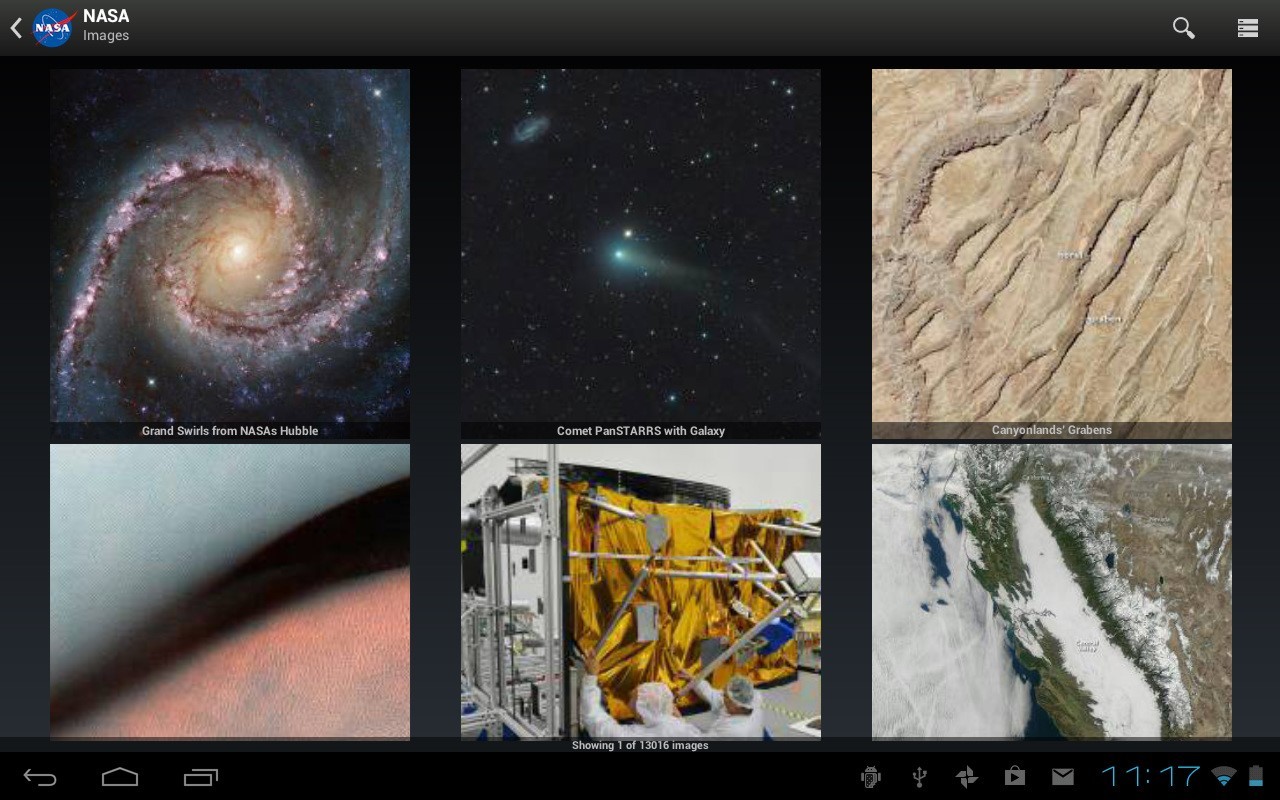
The NASA application has the ability to track the location of the ISS - it's hard not to notice the station, you just need to know where and how much to look. ISS Detector is a special application for tracking the location of the ISS with the Russian (suddenly) interface. On a paid basis, you can also track the Tiangong space station, the Hubble telescope, satellites and comets.
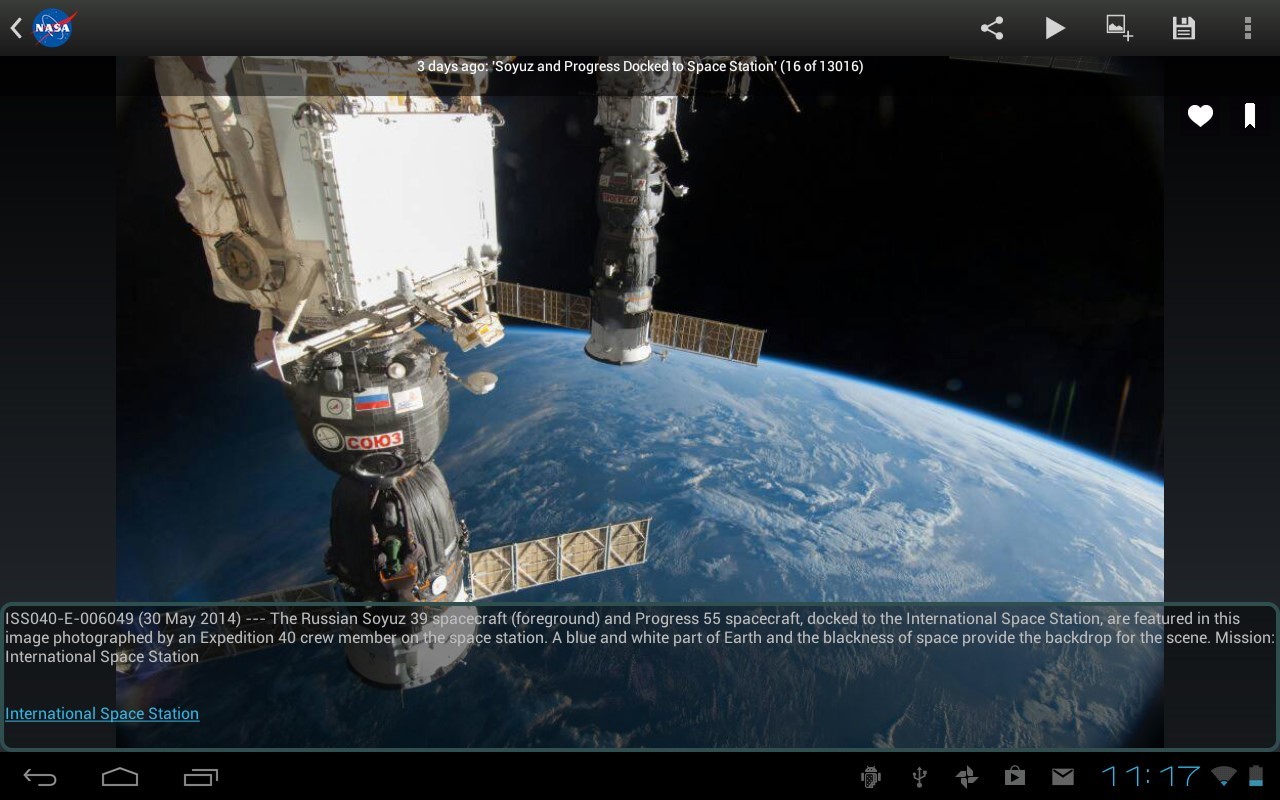
Unfortunately, our Roskosmos cannot boast of any similar applications - they simply do not exist.
Star chart

Star Chart is used by more than 15 million people, making it one of the most popular astronomy applications on mobile devices. Awesome AR functions - point the smartphone camera at an object in the sky, and the program will tell you what you are looking at (however, almost all popular astro applications have this function). Contains data on meteor showers, comets, satellites, including 5,000 visible stars of the two hemispheres (and another 120,000 other stars); displays 88 constellations, all the planets of the solar system, allows you to "move in time" by moving the map 10,000 years ahead or backward in time. You can also change your location to view the night sky from other points on Earth. The application is free, but contains an internal store where you can buy extended star catalogs, meteor showers, comets, and so on.
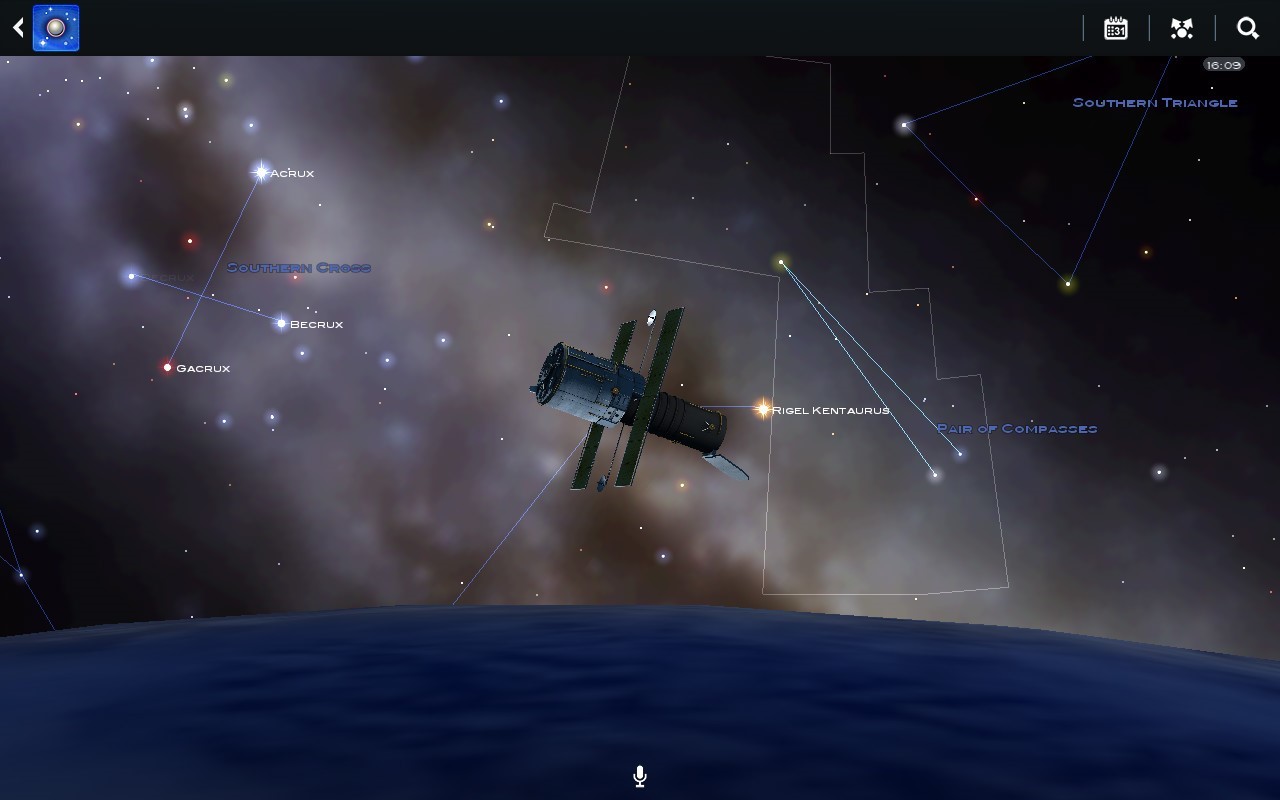
Star Chart stands out from the background with a great user interface. Yes, there is practically no support for the Russian language (if this is important to you), but the interface is so worked out that even a schoolboy will deal with it.
Skyportal
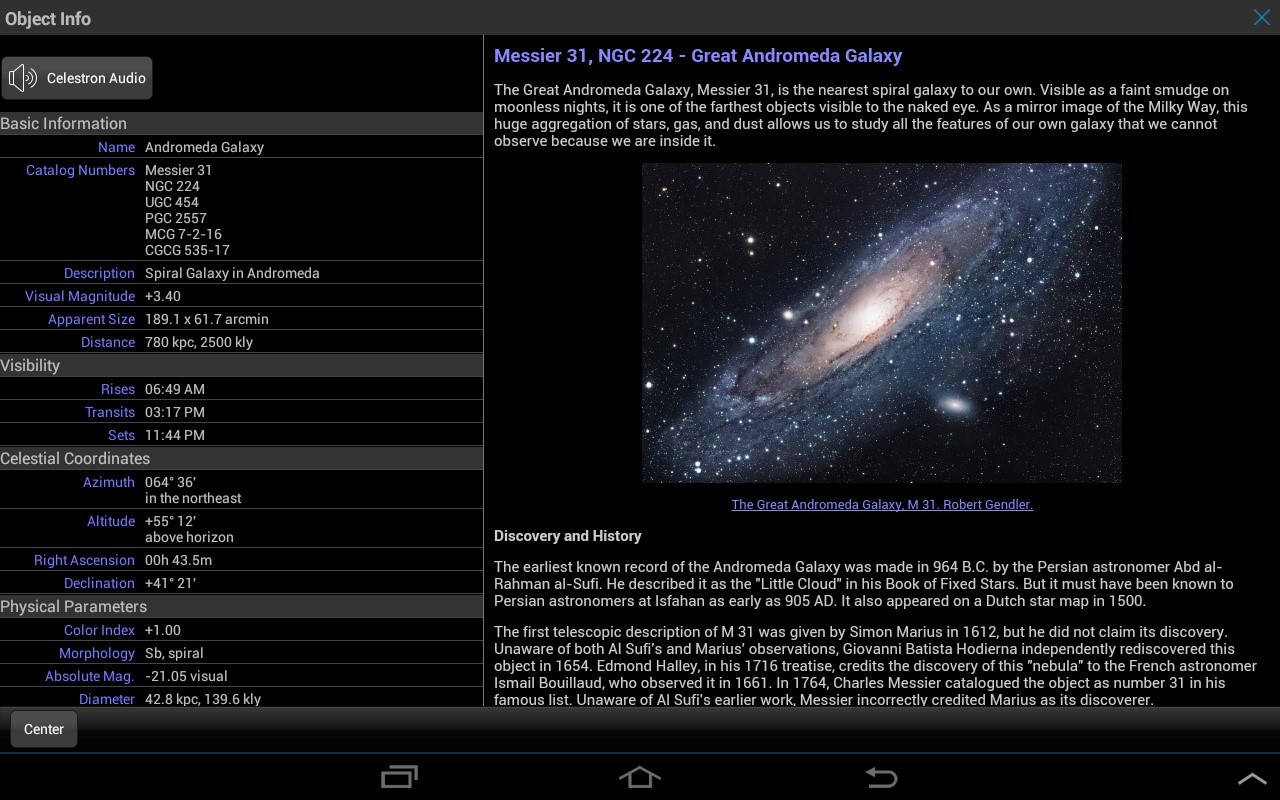
If in the second half of the article you like some kind of paid program, but you don’t want to spend money on it, then return here - SkyPortal free mobile planetarium contains all the necessary information on 120,000 stars, more than 200 star clusters, nebulae, galaxies, dozens of asteroids , comets and satellites, including the ISS. The application also works with a telescope, allows you to point it at any object in the database and view it with greater detail.
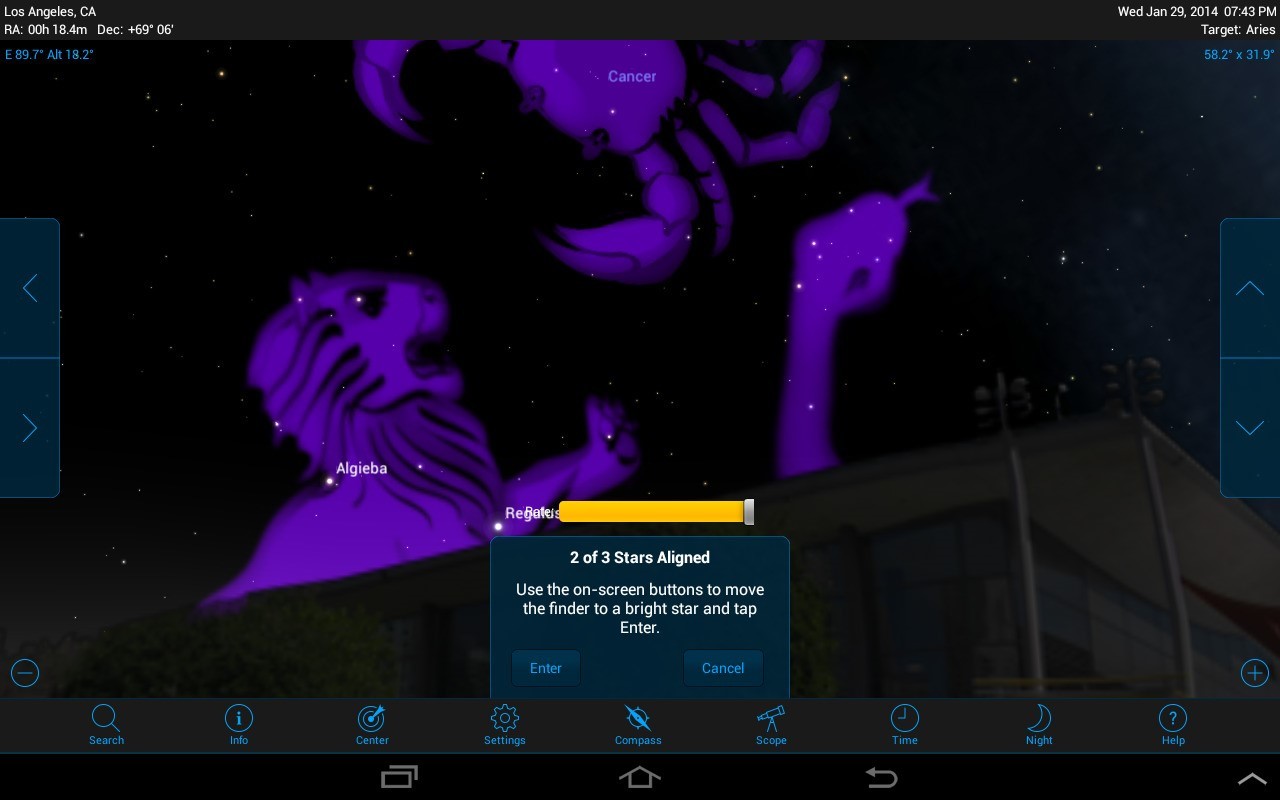
For the most popular objects, you can view astro or even listen to audio descriptions (in English). SkyPortal allows you to change the night sky 100 years ahead or back (the Time Machine function), as well as watch the stars from any place on Earth. The application determines the ideal time and place for observing various objects and events in the solar system (will show, for example, when it is worth watching Jupiter’s Big Red Spot or “catching” the ISS).
Startracker

The principle is already familiar to you - point the smartphone at the sky, and then StarTracker will begin to explain everything incomprehensible. To do this, it has data on the Solar System, 88 constellations, and more than 8,000 stars visible to the naked eye. The program is shareware, there is a paid Pro version with additional information on objects.
Using the zoom in StarTracker, you can search for certain stars or constellations, but to search for celestial objects by name, activate the Time Machine function and view more detailed illustrations of the constellations, you need to switch to the paid version. There is a version of the program for VR .
Sky map

Extremely popular (over 455,000 ratings on Google Play and under one hundred million downloads) and a very old application. Once called Google Sky Map, but then was given to the community and is currently being developed with open source.
Apart from the big name and great history, Sky Map does not stand out particularly against the general background of good free applications for studying space objects. You send the phone to the sky and find out all the necessary information about the stars.
SkEye

Much less known application, but develops quickly, regularly receives updates. Supports work with telescopes. The database contains 2,400 visible stars, 110 astronomical objects of Messier , all the planets of our solar system, there is a function "Time Machine".
Skyview
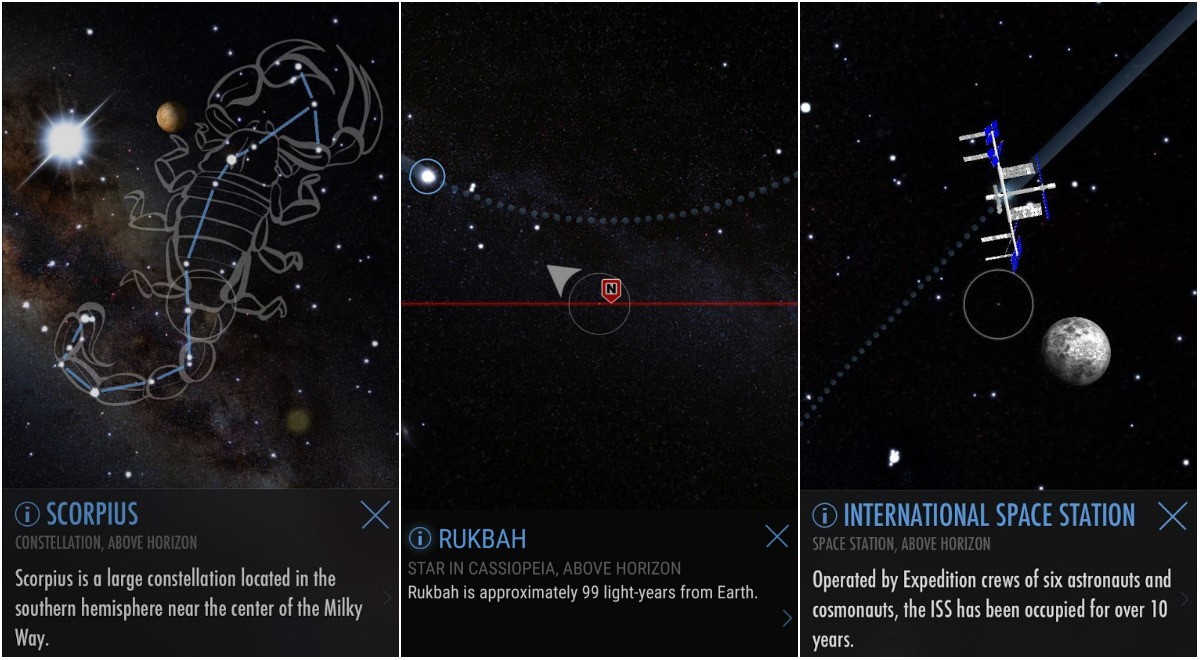
The winner of the contest AppsZoom "Best Android app 2014". Simple application with AR-ability to identify stars, planets and constellations; there is a demonstration of the path of the observed object in the sky, as well as information about selected objects, planets and satellites. SkyView also has a Time Machine feature.
Paid applications
Stellarium (149 rubles)

Mobile version of the program, well known among amateur astronomers. Pay for it is worth it if you like this program for desktop computers, and you want to take advantage of its features in the version for smartphones. However, in a mobile application there are far from all the functions present in releases under Mac or Windows. Yes, the catalog contains data on more than 600,000 stars on a scalable sky map, but there are not many familiar functions — for example, there is no possibility to use the program with its telescope. Inferior not only to other paid applications, but also free analogues.
Solar Walk 2 (149 rubles)

A rare application from a Russian developer - the entire interface and the entire library of data in Russian. Three-dimensional model of the solar system, 3D-models of spacecraft (including the ISS and the Hubble) and photographs taken during missions. The 3D mode feature allows you to view objects through stereoscopic glasses.
There is a calendar with various astronomical events (solar and lunar eclipses, phases of the moon), as well as events from the history of astronautics - the first man’s spacewalk, the launch of satellites, the first landing on the moon.
The object base is relatively small, but what is in Solar Walk 2 is well done - the application clearly focuses on the planets of the solar system, and not on the stars of the entire Universe.
Star Walk 2 (149 rubles)
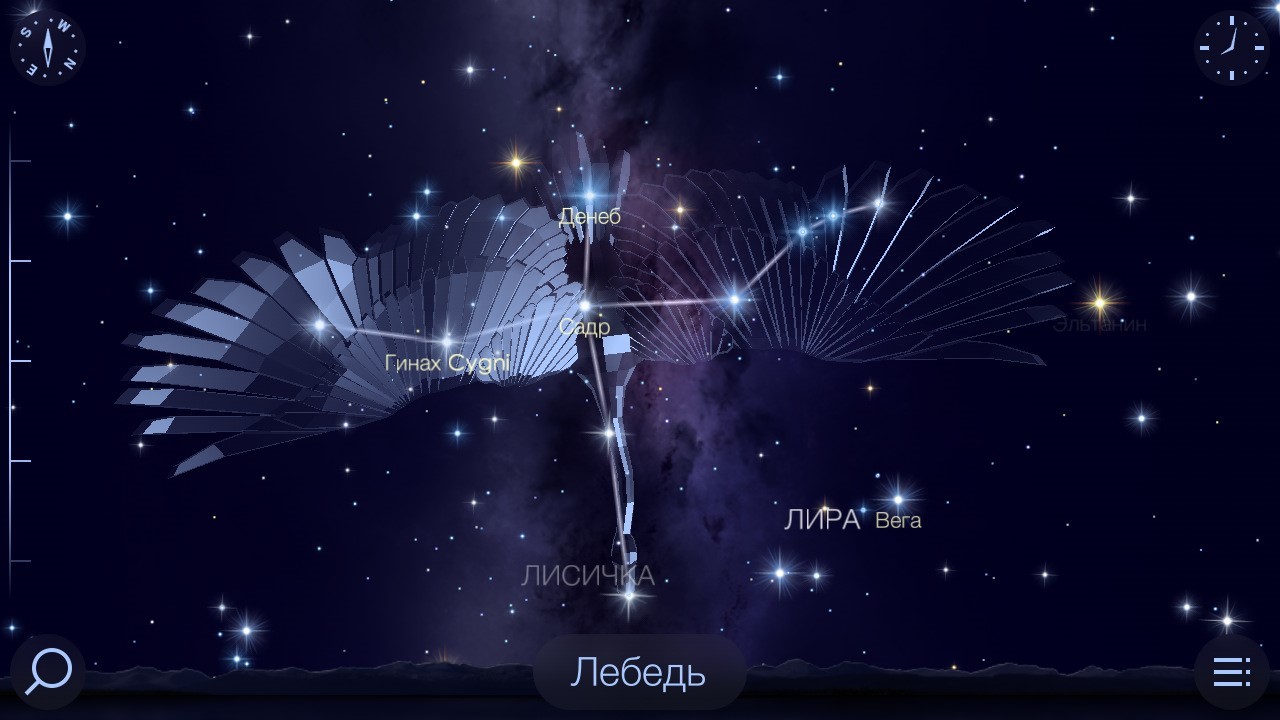
Strangely enough, Star Walk was made by the same developer as Solar Walk. Moreover, Star Walk has a free version containing, in addition to the standard set, an X-ray sky map, daily data on sunrise, sunset and rise over the horizon of the Sun and the Moon, moon phases, information on the most interesting objects of deep space. The free version contains almost everything that is in the paid one, but for donate content becomes more voluminous. In the paid version, you can track the exact position of the satellites, learn more details about the constellations, see three-dimensional models of the planets.

The application is Russified (which is logical).
Star Walk is easy to use in conjunction with a telescope - you can accurately determine the position of the object during astronomical observation. The interface not only identifies celestial objects, but also helps to learn more about them, providing all the information available today. There is a function of "Time Machine".
Distant Suns (max) (213 rub)
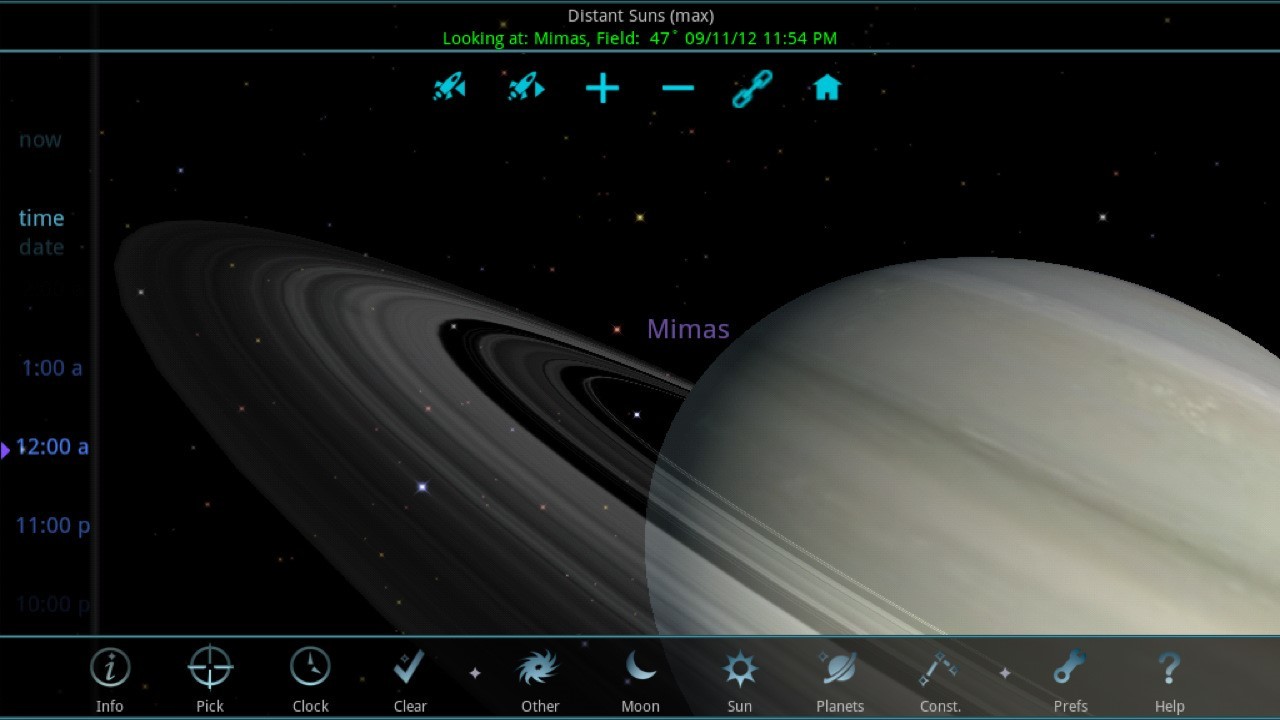
This application has become a finalist in the TabTimes Best Tablet App 2014 competition. The database contains information on the following objects: 130,000 stars, the solar system, more than 200 galaxies, nebulae, and star clusters that are within reach of a simple telescope.
Mobile Observatory (299 rubles)
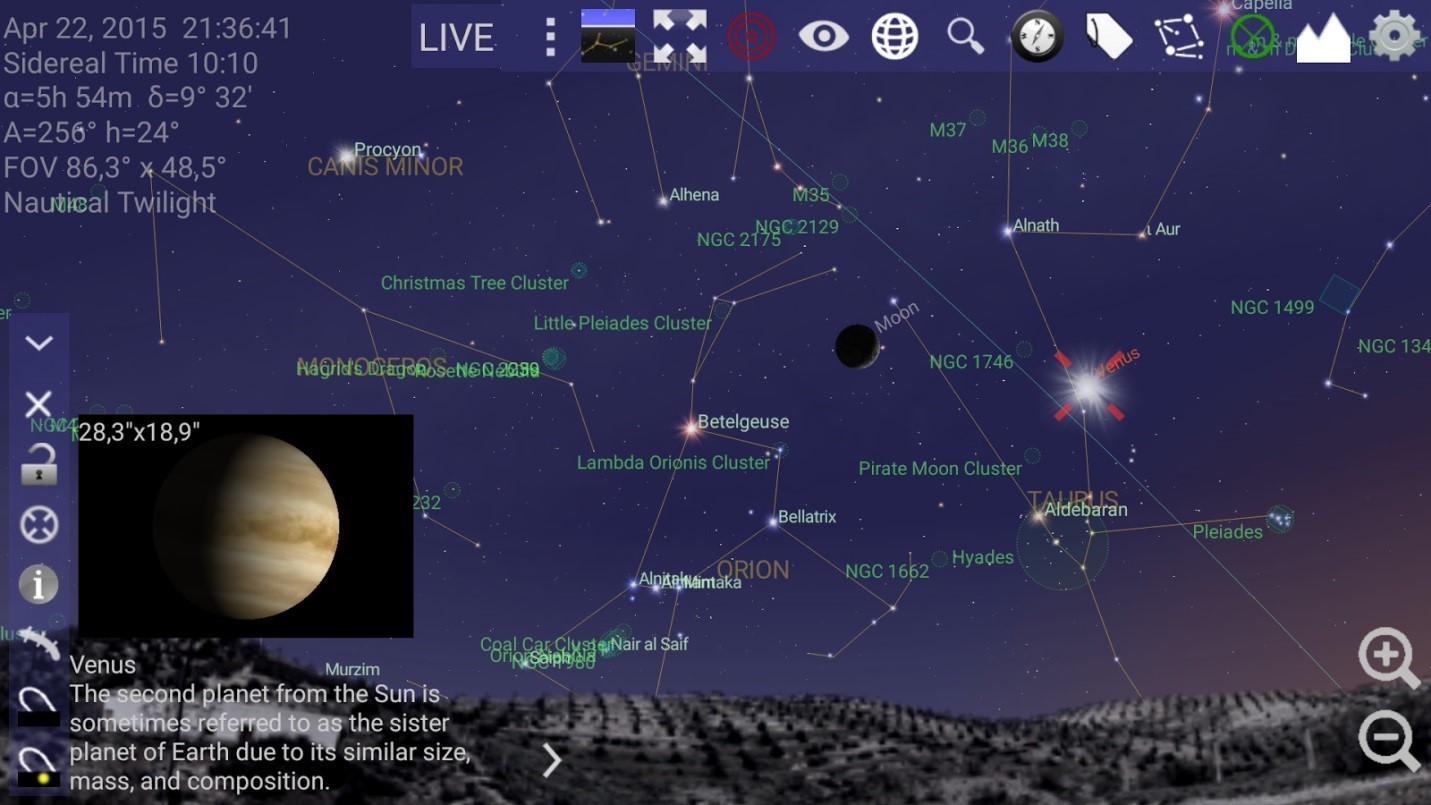
Program with a large database (both text and photographs): Solar system, 9,000 brightest stars, 400,000 all other stars, 2,500 galaxies, more than 10,000 minor planets, comets, meteor showers, a calendar of astronomical events (if any there are no events, then they will simply tell you that the brightest will appear in the sky tonight), lunar and solar eclipses, the moons of Jupiter and the satellites of Saturn. Mobile Observatory shows the time of twilight, the position of sunspots on the Sun, the types of objects in the solar system at different wavelengths.
For different objects have their own calendars - you can follow, for example, the movement of the moons of Jupiter and their shadows.
SkySafari 5 Pro (2 290 rubles)
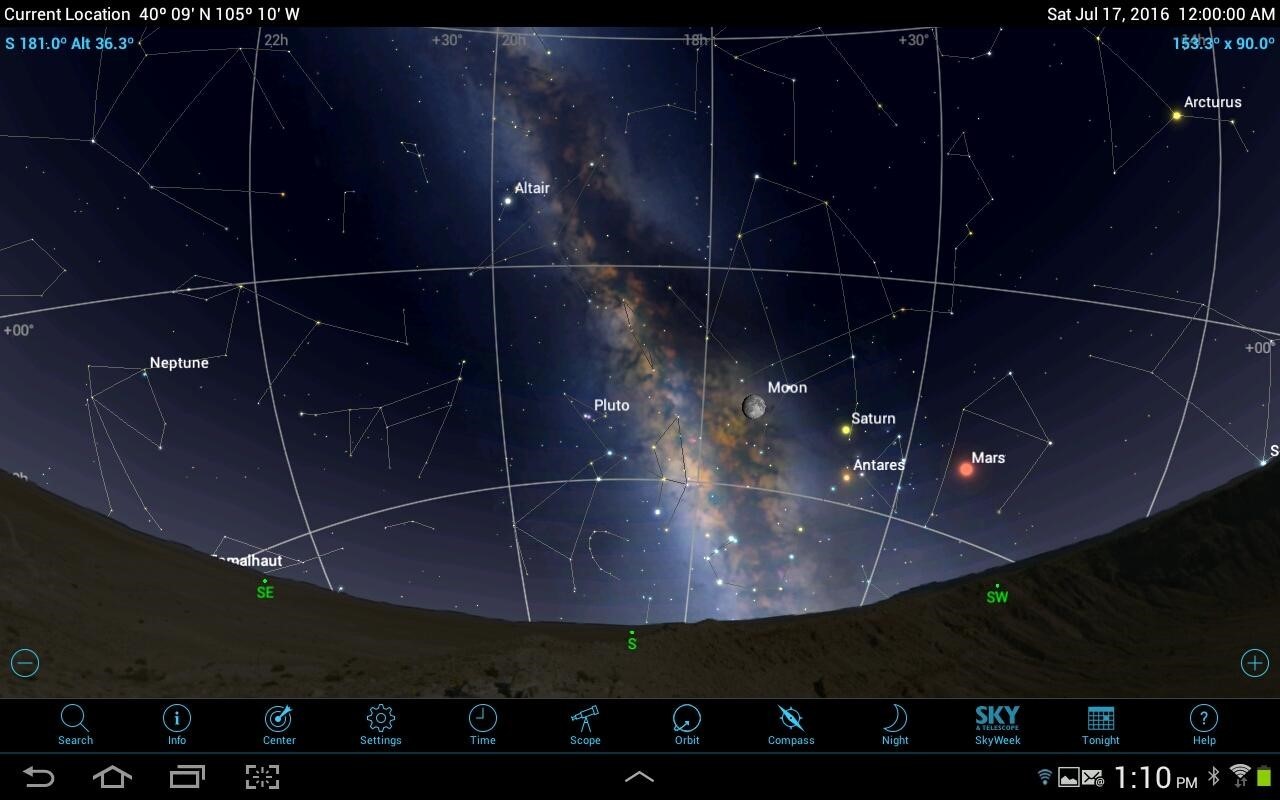
The new version of the program with the largest astronomical database among all applications. It contains more than 27 million stars, 740,000 galaxies, all objects of the Solar System (including all comets and asteroids ever discovered), satellite orbits, a map of the Moon, and much more. Allows you to find the desired object, operating with GPS data and phone gyros. SkySafari has descriptions and photos of constellations, stars and planets created by professional astronomers - this is a real star encyclopedia. SkySafari Pro can be “tied up” with your telescope and direct the device to a given point in the sky. In general, it is difficult to say what is not in it. The only negative is not only paid, but also the most expensive application in the review.

It would be a mistake to say that SkySafari is the absolute and only tool of the mobile astrolinker, since there are things that this program cannot do. For example, take into account the atmospheric conditions while working with a telescope (for this purpose you can use the free application Astro Panel ). However, there are several functions in SkySafari that are almost non-existent. In addition to working with a large database, you can create your own specialized list of observations based on complex criteria, save in the .skylst format, and then import to a computer.
The sun, moon, satellites and the night sky
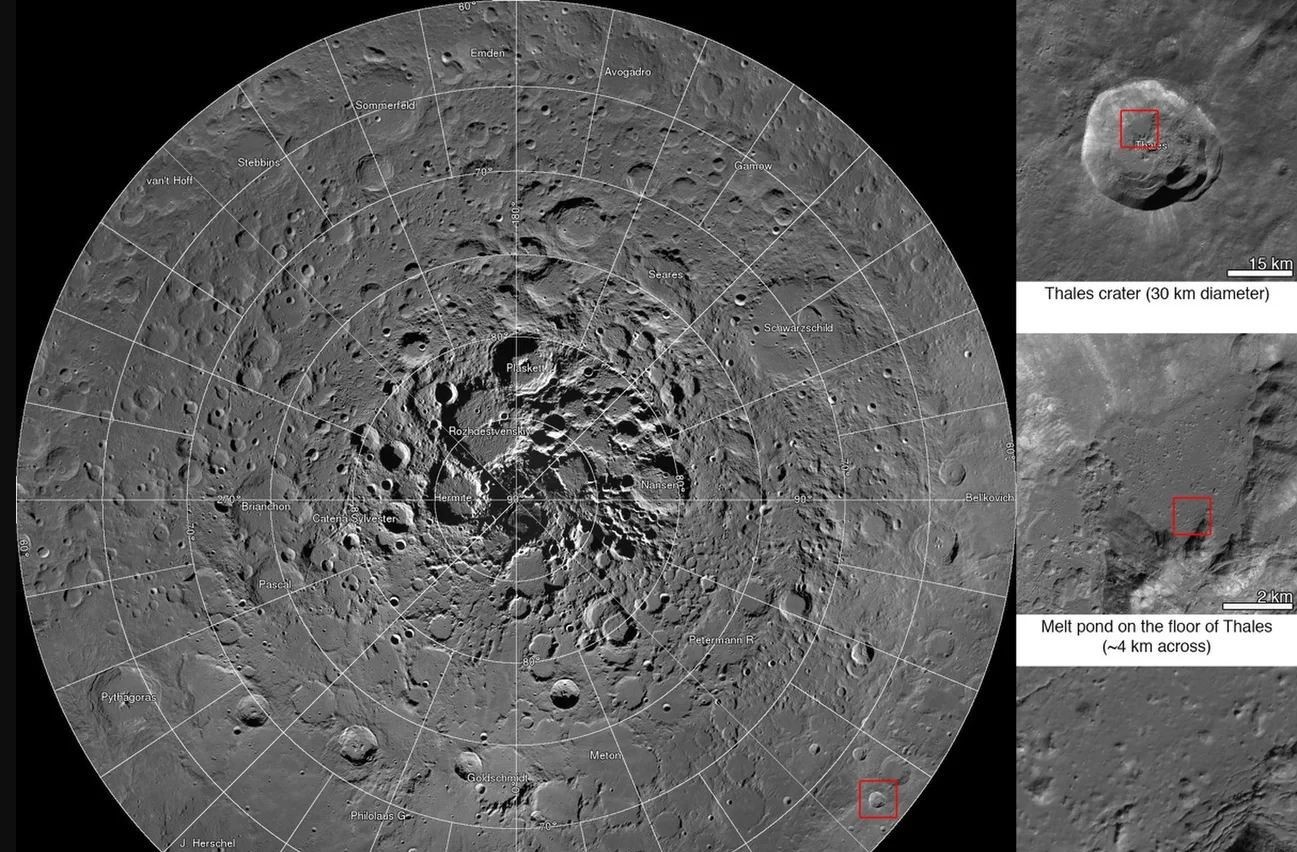
Sun and moon
A simple application to monitor the lunar phases and solar activity. The sun and moon are displayed as actual images received from NASA satellites.
Lunar map hd
A good paid (99 rub) moon map. In the application, you will see lunar reliefs in the resolution of 5120x5120, as well as photographic maps taken with the Lunar Reconnaissance Orbiter orbital probe camera in the resolution of 20480x20480. With this application, users can view the visible or the opposite side of the moon.
Satellite Augmented Reality
If for some reason you are most interested in observing and tracking artificial satellites instead of natural objects in the sky, this application will help you identify all objects created by human hands orbiting around the Earth.
Night sky lite
An application for those who want to just look at the stars, without being distracted by anything. Night Sky Lite offers excellent places around the world to observe the night sky and advises the most interesting astronomical events. It also checks the weather conditions for the week ahead so that you can plan the best dates for observation. For those who do not want to go anywhere, Night Sky in the Journey mode will show the sky from anywhere in the world. And the combination of the functions "Journey" and "Time Machine" will allow you to see the sky at another point on the globe in the past or in the future.
* * *
All of these applications are not a complete replacement for laptops and desktop programs such as Starry Night or Stellarium , but they are indispensable if you want to spend more time exploring the night sky or go on a journey to get the brightest stars.
Source: https://habr.com/ru/post/403599/
All Articles